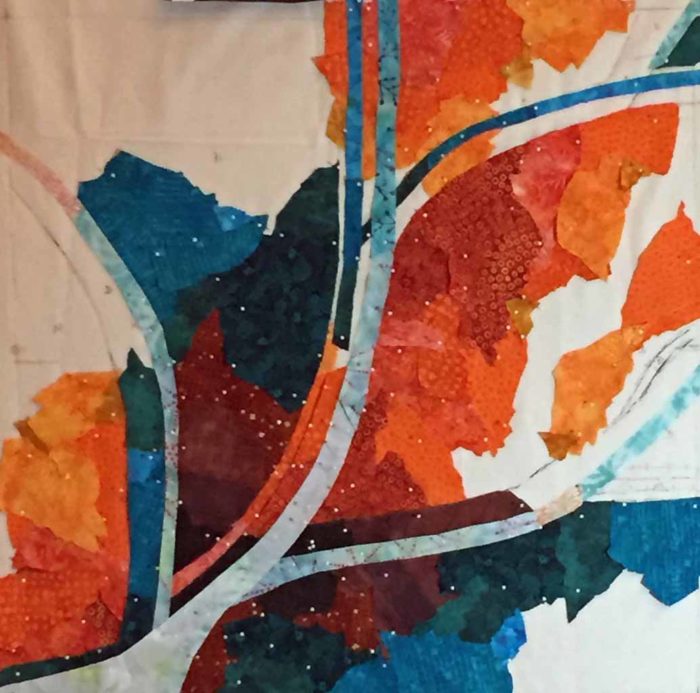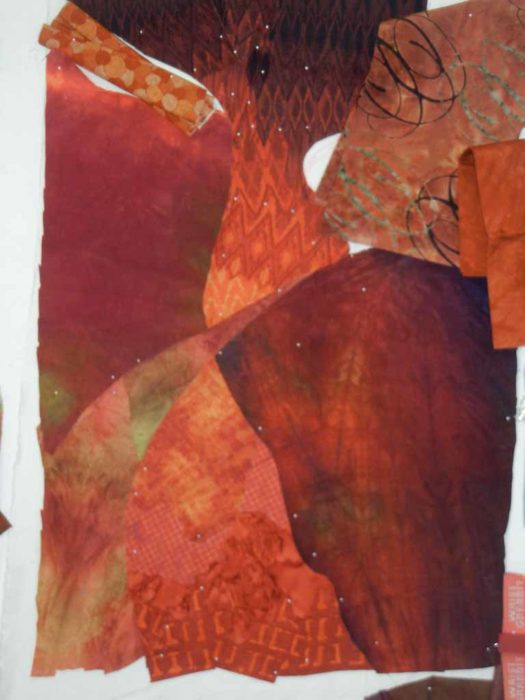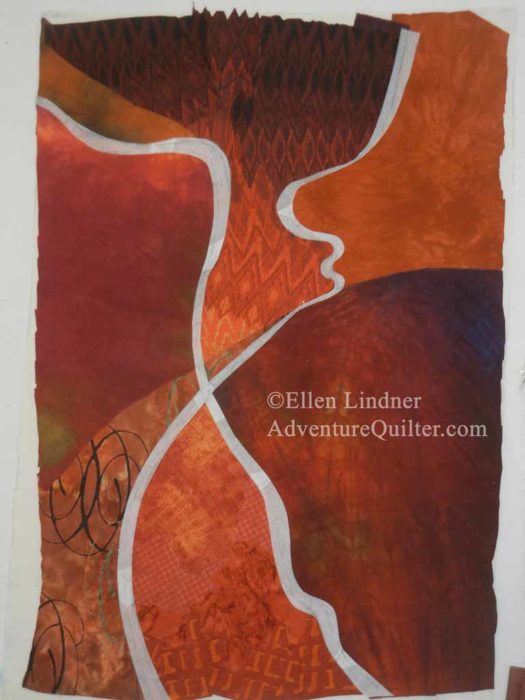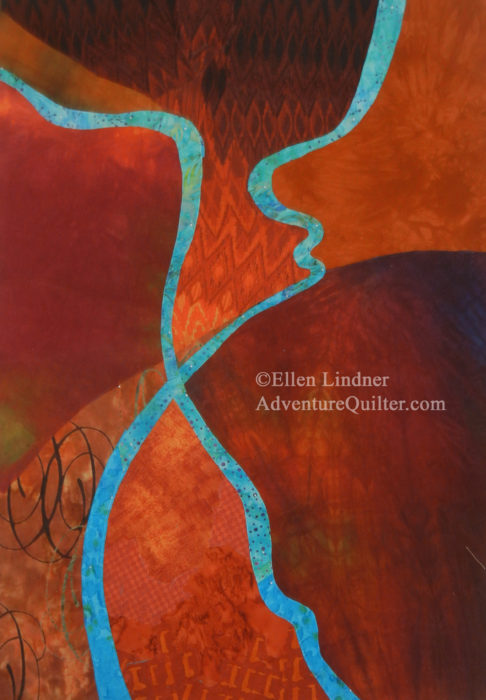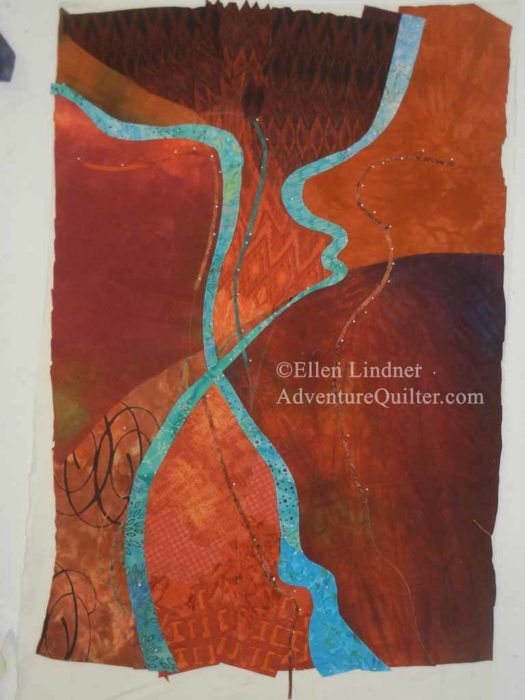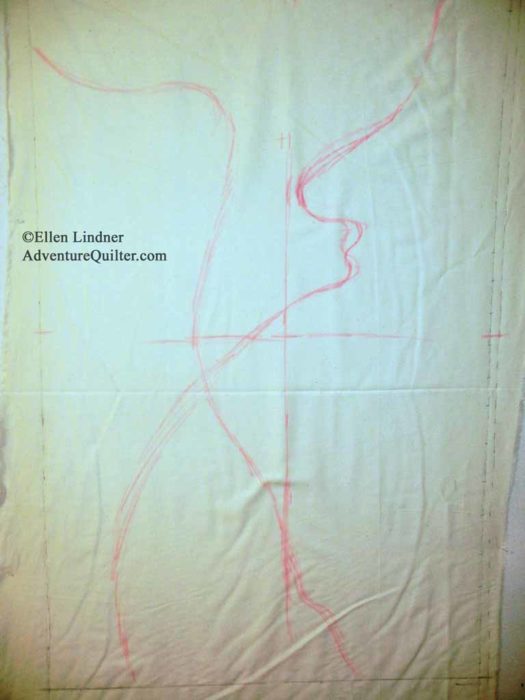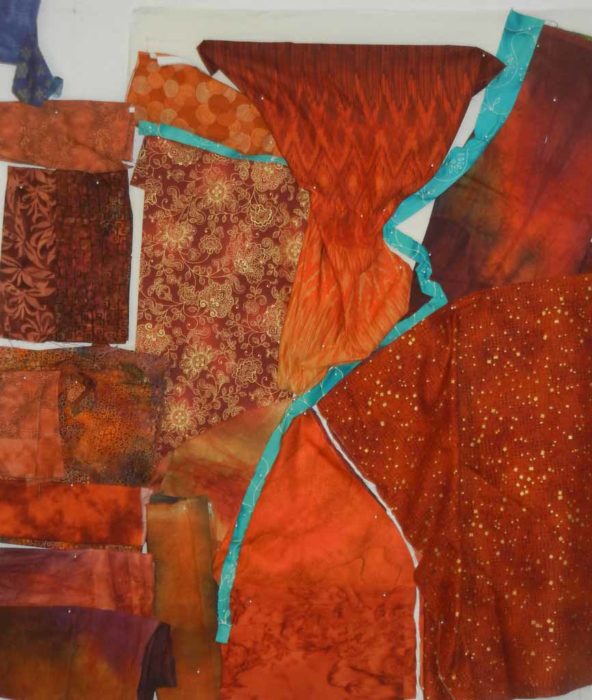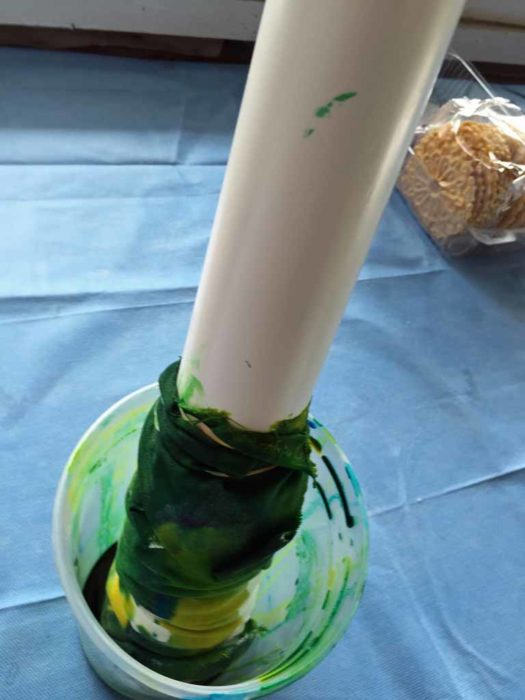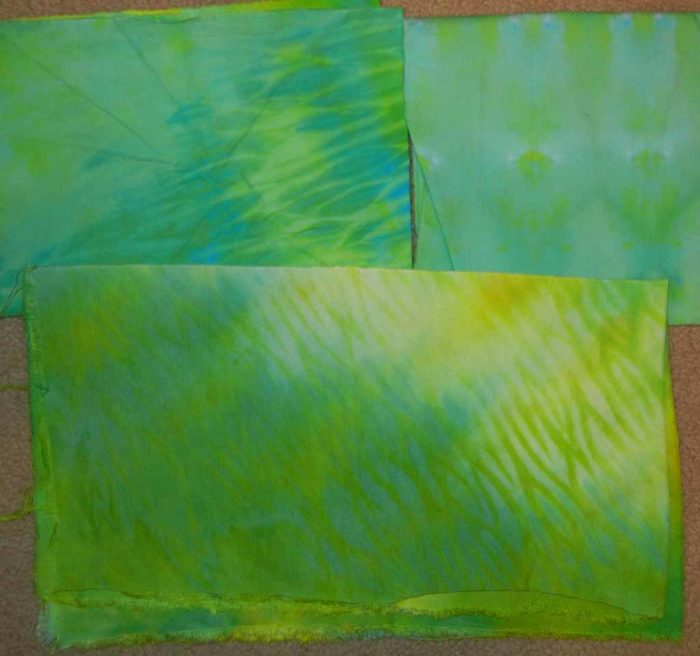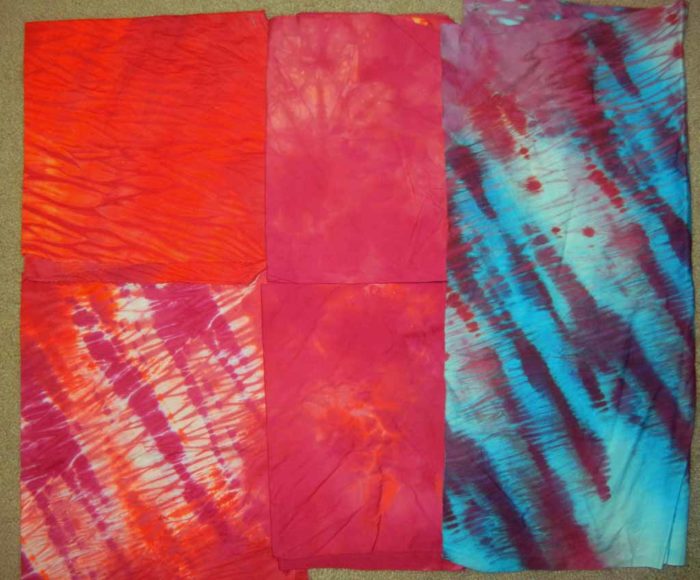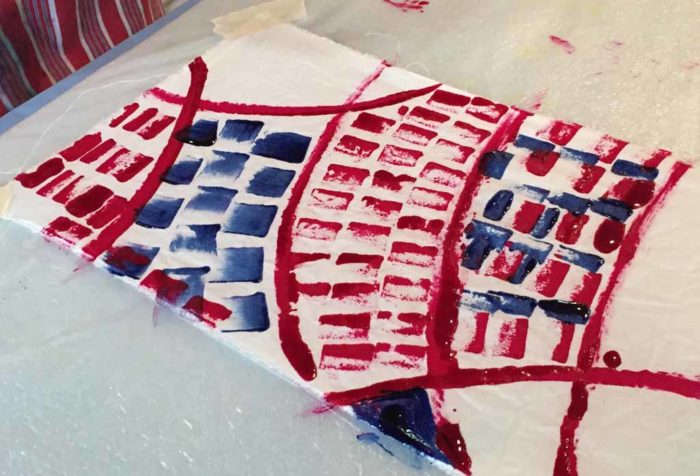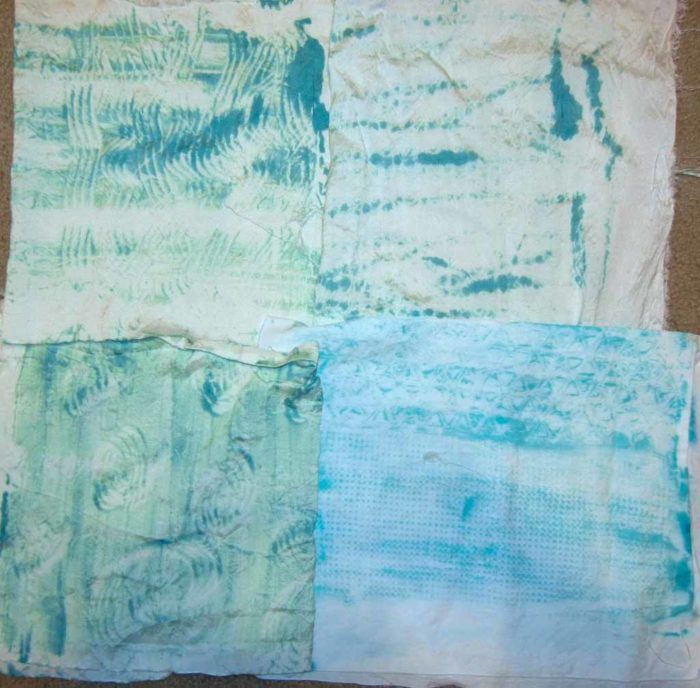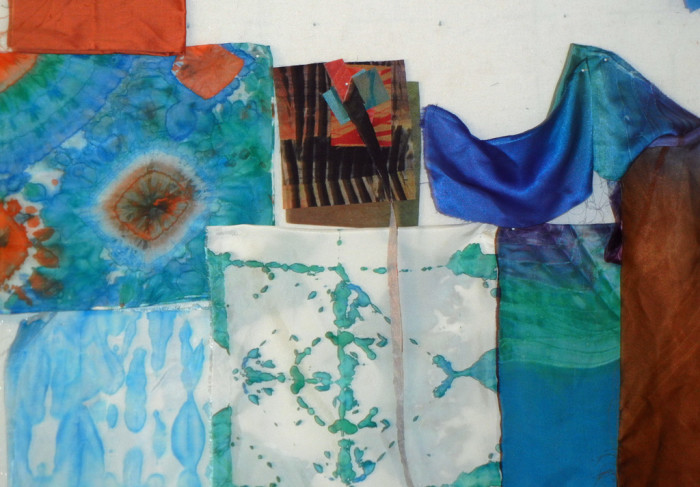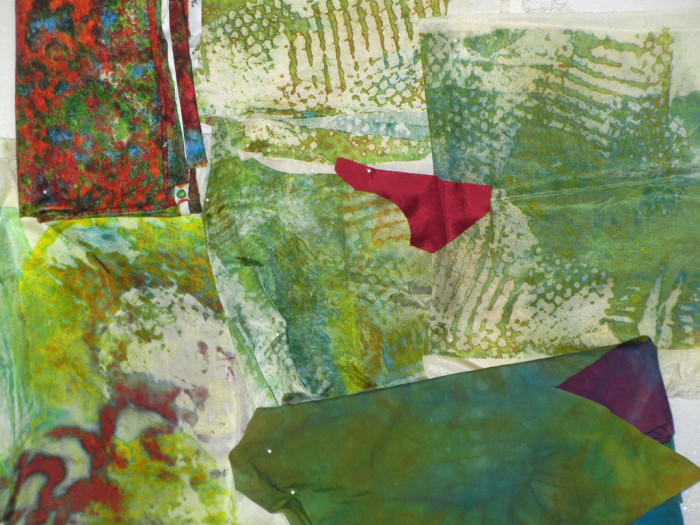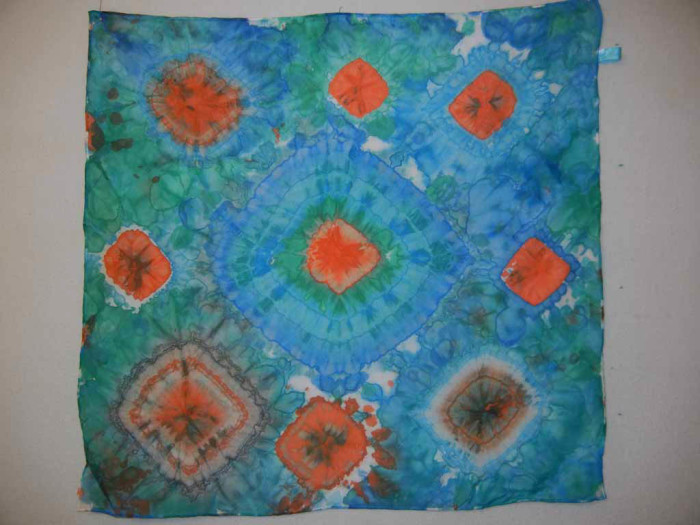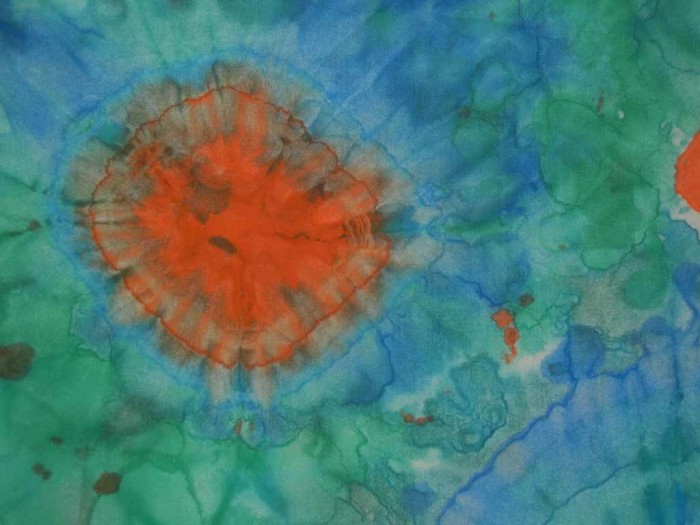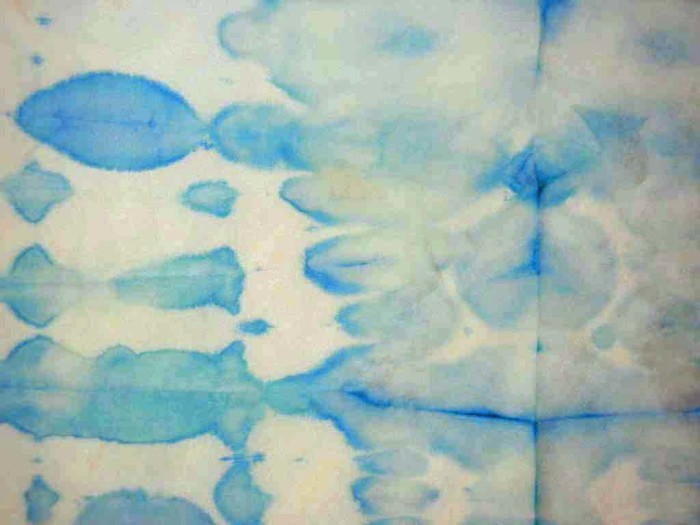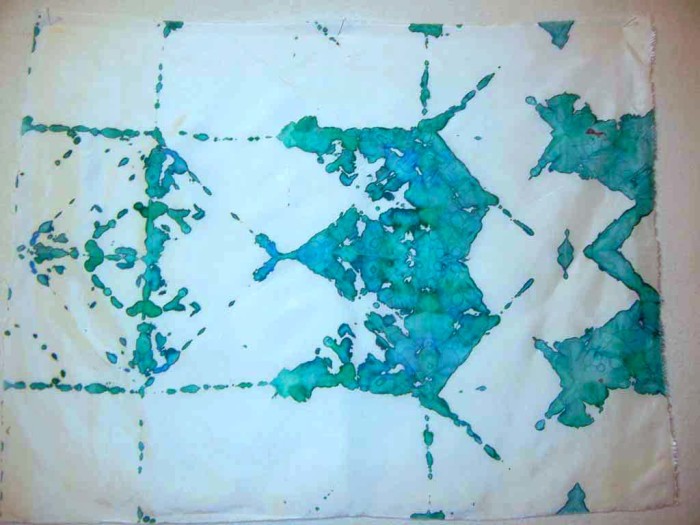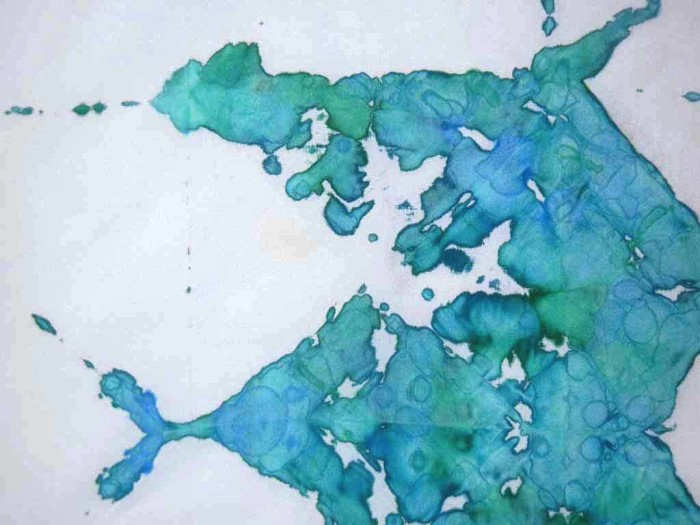I recently got to play with deconstructed screen printing again, and I got some pretty cool results.
The process is easy, but it also involves a fair amount of dyes, equipment, and set up.

Here’s a brief video overview.
You start by purposely allowing thickened dye to dry in your screen. A random design is created by putting various textured things under the screen when adding the dye. The texture creates puddles and such, which hold the colored dye in a pattern.
Here’s my red screen. When creating it, I put rubber bands, a strip of corrugated cardboard, bubble wrap, and plastic grid underneath the screen. Can you see how the various textures made the dye build up in interesting patterns and thicknesses?
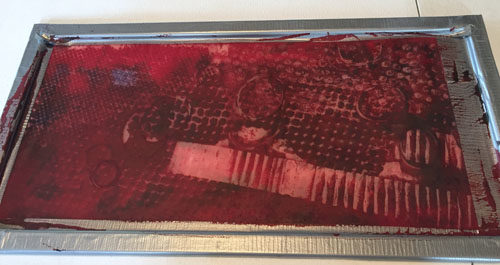
Next, you pull colorless dye paste through the screen. This causes the dried dyes to break down and to color the fabric in interesting ways. But, each pull is different, because the dye design is being broken down (deconstructed) each time.
These are the first 3 pulls using the red screen above. Number 3 has been inverted.

I continued on until there was not much of a pattern left, eventually printing only part of the screen.
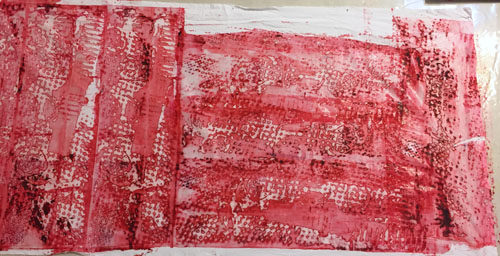
All my red fabric.

Here’s my oh-so-boring blue screen. It was made with a heavy crocheted tablecloth scrap, and a doily (I think.)

Surprisingly, it printed pretty well.
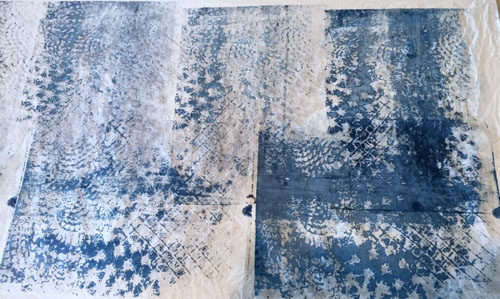
Not happy with the stark contrast of white with one color, I decided to over paint/over dye everything. I got a little carried away with this one, making the green dye darker than I intended. I was philosophical, though. I knew I could use green fabric as easily as blue.

I over painted the red with a variety of orange, rust, brown, etc. Not bad, I thought.

A detail shot.
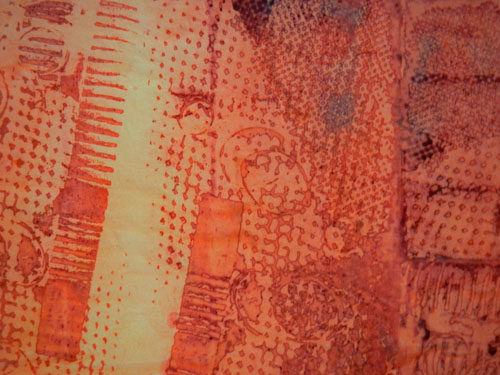
I think these fabrics will be useful.
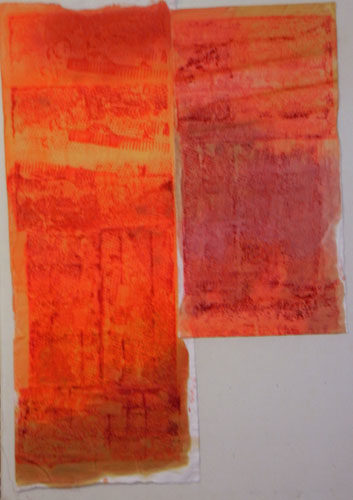
The red fabric held it’s color well, even when rinsed four times and washed once. But, look at the blue!
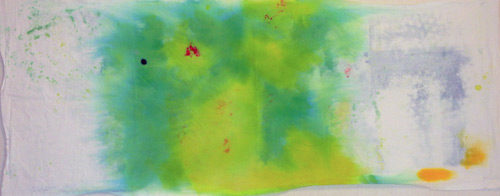
What happened to the blue, you ask? That’s what I’d like to know. Clearly, that dye was weak for some reason. And what about the reds spots above? Did I accidentally get red dye on it? Nope. It appeared during the rinse and wash process. I’m guessing there was some red in the yellow dye that I used to create green. So, unexpected results, but a usable piece of fabric, nevertheless.
One other thing. Dye is harder to remove from skin than paint. Ask me how I know.

The designs for this screen printing were all random. In my next post I’ll show you what happened when designs were drawn on the screen. They all turned out really great!
Ellen Lindner


